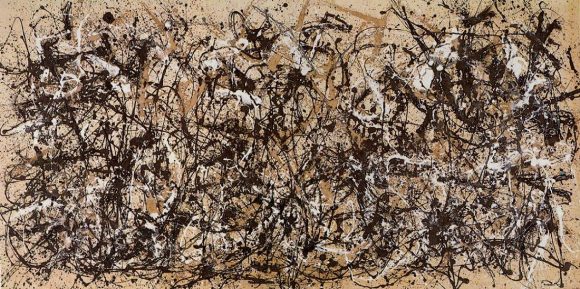Yes, I have a minor in Art History. No, I do not paint. Anything Can Be Complementary, Minor in What You Love.
December 29, 2017
by Patrick Smith, SCC’18
As a Strategic and Corporate Communication major, I’ve taken a wide range of classes such as Message Design, Risk and Crisis Communication, Theories of Persuasion, Organizational Communication, Advertising and Promotion Strategy, and International Marketing.
Talk about being well-rounded, ha!
I’d like to propose, however, that I would not have learned so much from all of the diverse courses in my major had it not been for a minor that challenged me, pushed me, and excited me.
Choosing to minor in Art History was one of the best decisions I’ve made during my time at Chapman University, and I’d like to explain this through a quick, concise, art-historical writing style called a Visual Analysis, essentially a discussion of an artwork’s visual elements.
This Visual Analysis will be on Jackson Pollock’s, Autumn Rhythm, 1950.
“Upon first glance, the viewer of Jackson Pollock’s Autumn Rhythm is immediately caught up in its battle of texture, one that spans from each end of the canvas. In both color and in shape, every stroke of Pollock’s brush and drip of his paint can be seen very plainly and, over time, seeks to take a hold of the viewer. In addition to the paint and depth that it brings in its various action-painted forms, the size of Pollock’s Autumn Rhythm shares this same quality of dominance that is both threatening and reflective in nature – being 9ft. by 17ft.” – Patrick Smith
Jackson Pollock, Autumn Rhythm (No. 30), 1950.
Further, in order to really understand this work by Jackson Pollock, it is unavoidable to ignore the context that is associated with this painting.
For instance, in the year of 1950, when this work was created by Pollock, the second World War had just ended. The world was sorting through ways to cope with the cruelty and irrationality that was displayed of mankind. As a result, the Art that took place after WWII could not comprehend depicting images that were familiar…no one wanted to either remember or reflect on anything.
Thus, artists started over and built Art from scratch…even to the extent of ripping the canvas off the wall and throwing it onto the floor, literally. This is quintessential of Jackson Pollock’s procedure of formulating his works—action painting. In other words, Pollock sought to put himself into the canvas, mindlessly painting with “flow” and “ease”, even sometimes stepping into the canvas that was placed on the floor to get “into” his work. With Autumn Rhythm, Jackson Pollock was reflecting on and reacting to WWII.
“I mean, ‘Wow.’ See, that is why I love Art History.” – Patrick Smith
Minoring in Art History, I was challenged to not simply dismiss something by its formal, visual elements, but instead to embrace them–a work’s size, shape, color, stroke, use of line. Even more, I was pushed to conduct research, consider the context, pursue the meaning behind every work that I studied. Ultimately, Art History taught me to be fully present in everything I do.
As a soon-to-be graduate of the School of Communication at Chapman University, I have built schema relevant to the design of messages for campaigns, communicating effectively in a time of crisis, developing marketing strategy for domestic and international markets to the professional world, and more. I am confident that I can now apply meticulous, analytical attention to detail and execution from Art History to my course knowledge of Strategy and Communication.
Really, I love Art History, and I appreciate everything it’s taught me in the many classes I’ve taken in Moulton Hall. If I had not chosen to minor in Art History, in something I have a passion for, I believe that I would not be as present, devoted, and aware in my Strategic and Corporate Communication courses at Chapman University.
Art History expanded my mind, my potential as a student, professional, and person. I can use this intellectual expansion and apply it to my major, and ultimately, the work force.
If I could give advice to students currently considering their minor choices…..
“A minor should be complementary, while at the same time be wacky, fun, different, and challenging.” – Patrick Smith



